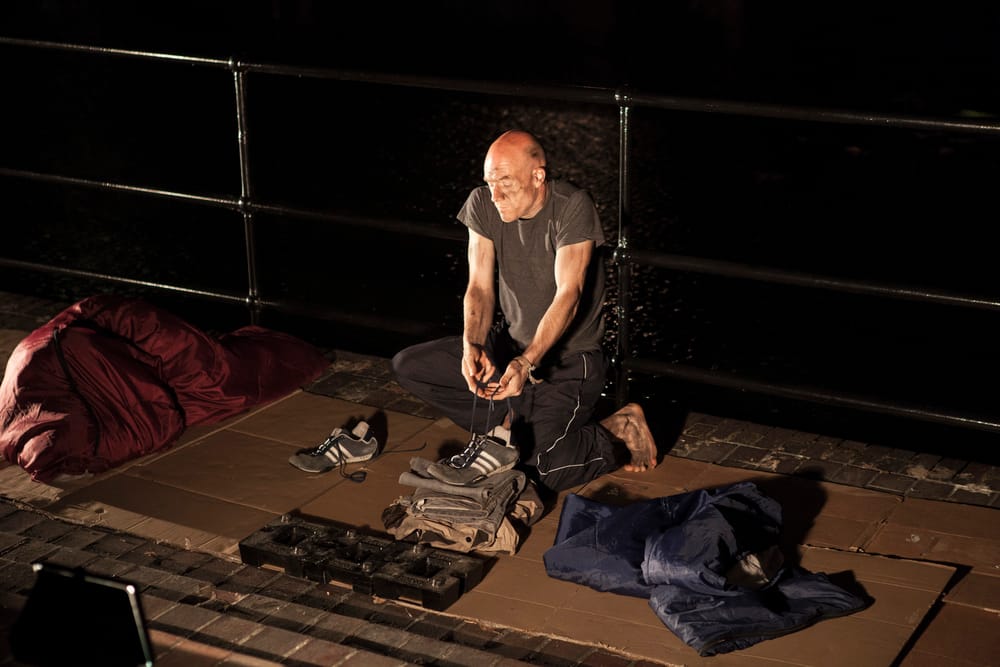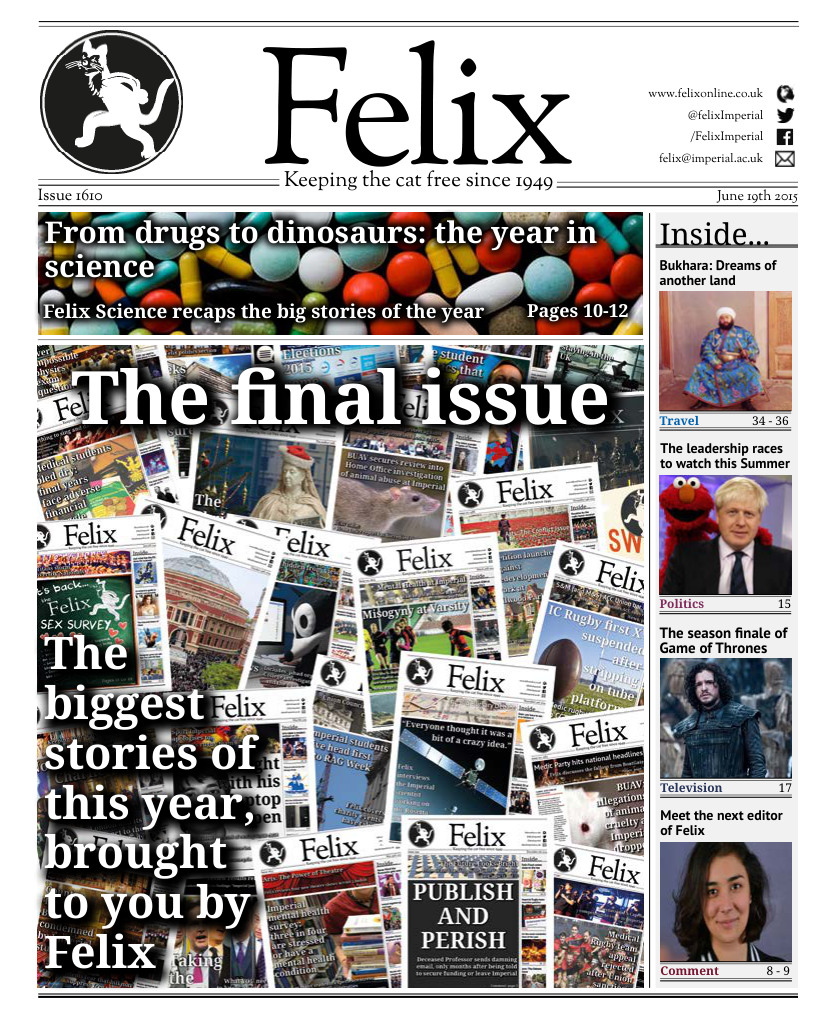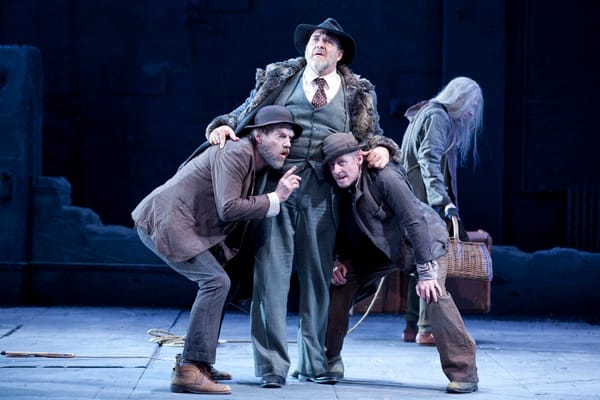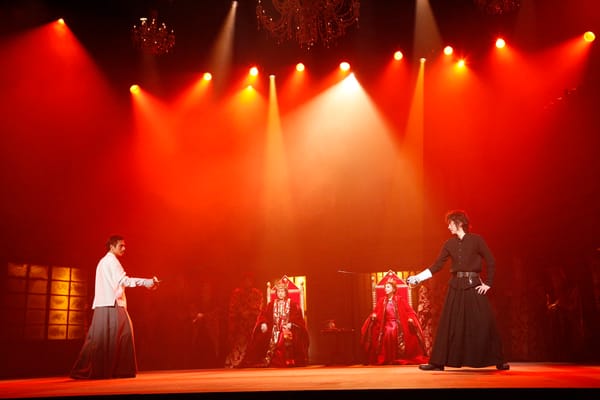Beckett in the City: A Potent Reminder of Inequality
Jingjie Cheng finds that Company SJ's city-based version of Rough for Theatre I and Act Without Words II reminds us of the relevance of Beckett's work

Sometimes, a creative piece comes along that leaves you thinking about its issues for a long time, surfacing now and then as a question, emerging here and there as an idea. These works leave an imprint of the artist’s thoughts on you, and you are left with a view of the world through another’s eyes. Sometimes, the full brilliance of these ideas do not take you over until you have turned the words over again and again, passed them between your hands, rubbed them between your fingers. They do what effective art is meant to do – make you ponder.
Beckett’s Rough for Theatre I and Act Without Words II are two such works that left me mulling over the issues presented long after the short sketches ended. The double bill, part of the ongoing International Beckett Season at the Barbican Centre, juxtaposes two of the Irish playwright’s miscellaneous sketches by running a common theme through them. Who are the destitute? What are their stories? And what can they tell us about the nature of human relationships.
Indeed, the interaction between two homeless people in Rough for Theatre I can almost be seen as a microcosm of human relationships – A and B have apparently been left behind in a miserable place, devoid of any other human being. A is blind while B is crippled, and each can theoretically rely on the other to supply what they lack. However, as in many such transactions, there is a mismatch between what one expects and what the other is willing to give, leading to conflict and manipulation. Throw into the mix two very different personalities, and the audience can see how many ways this ideal collaboration can go wrong.
The double bill juxtaposes two of the playwright's sketches by running a common theme through them
A, having once seen the light, is eager for B to describe to him everything about the surroundings, often asking if there was light, or whether it was day. B, who can see how hopeless the situation is around them, is more cynical, and gets increasingly irritated by A’s repeated requests for him to describe. He does not believe that A will help him “unconditionally”, but A does, and the two men share an intimate moment together, two forsaken souls with only each other for company.
The production is part of Beckett in the City, a project by the Dublin-based group Company SJ, which specializes in the works of W. B. Yeats and Beckett. The project, which began in 2009, transposes the absurdist master’s works into the architectural and social spaces of the city. It has already presented this double bill as site-specific pieces in Ireland, USA, and Japan. In each production, the characters’ relationship with their surroundings is different, but the issues are the same.
When the audience arrives for this Barbican production, they are led off to an undisclosed location in the Barbican Estate, and it is this act of navigation that begins the journey. By travelling to find the left-behind characters of Rough, we are reminded of their isolation. The actual city landscape that the play is set in, then, becomes part of the play’s identity, and conversely, the scene also irrevocably changes the way we view our city.
Indeed, the beauty of these sketches is their versatility in raising different issues, depending on where and how it is portrayed. By staging it in various street corners, Company SJ’s director Sarah Jane Scaife draws parallels between these men and the homeless in big cities, in the process drawing us closer to their plight. At the same time, by performing Act Without Words II after Rough, she sets Act in the context of the homeless. Act is by itself primarily an absurdist work, a comment on the essential meaninglessness of life as two characters are goaded into action in turn by, well, a goad. They crawl out of their bags in turn, going about their daily tasks which highlight their different personalities – A is messy and frail, while B is self-conscious, obsessive, and disciplined. At some point in their routine, they carry the bag containing the other person one step away from the goad, but the goad still reaches them in the next round and they repeat the routine – an action somewhat reminiscent of Sisyphus’ task.
Scaife is perhaps commenting on those who have fallen through society's cracks, and how difficult it is to step out of the routines that have defined their lives
In this case, Scaife is perhaps using Act to point out the vicious cycle that many homeless folk are trapped in. By putting A and B in bags that look like the sleeping bags of the homeless, she is perhaps commenting on those that have fallen through society’s cracks, and how difficult it is to step out of the routines that have defined their lives. In this way, while Act was initially rather incomprehensible, the myriad of interpretations and issues that it raises emerges the more one mulls over it.
It does, however, take some patience to sit through Act, especially if one is unfamiliar with the idea. Being a mime piece and beginning rather slowly, it can be quite exasperating if one does not know what the point is. Despite that, Raymond Keane does a very good job in portraying a tremor-riddled A and Bryan Burroughs manages to fully embody B’s obsessiveness without appearing affected. Keane is also B in Rough, while Trevor Knight was a convincingly sentimental A.
Rough for Theatre I/Act Without Words II is definitely a unique theatrical experience, and one that has important messages for our society today.
Rough for Theatre I and Act Without Words II are on as a double bill until the 20th June. Tickets from £20; available online








